Articular or osteoarthritis of the knee joint is a disease that occurs in the context of malnutritional changes in the context of subsequent connective tissue growth.There are many factors that affect the development of the disease, but all of them ultimately lead to metabolism invasion in the cartilage.In the medical literature, arthritis of the knee joint is called a contribution.
According to statistics, the sixth stage occupies a leading position in the frequency of other arthritis.This disease can cause severe discomfort and can turn into pain while walking and resting.
Knowledge of early symptoms will help doubt the development of pathology and cure it in the initial stages.
reason
According to medical classification, primary and secondary contributions or arthritis occur in the knee joint.
The articulation of the knee joint may occur in the context of various diseases or may be a complication.When the exact cause cannot be determined due to an unknown medical history or clinical situation, the exact cause is called the primary cause, but if the cause is known, this arthritis is called secondary.
After 45-50 years of life, almost all people develop with age.
The course and pathogenesis of primary and secondary joints are the same, and do not depend on the cause of occurrence.
The most common causes of knee articular and osteoarthritis are:
- Traumatic injury to the knee;
- Deformation of the joints inside and outside;
- Shorten one lower limb;
- abnormal joint allergies;
- chondrocyte dysplasia;
- Calcification of cartilage;
- Osteomyelitis of the femur and tibia;
- rheumatoid arthritis or arthritis of any other cause;
- glucose metabolism;
- Metabolic diseases and hormone diseases.
Injuried.After knee injury in the joint cavity, large static inflammation may occur.After the pro-inflammatory agent disappears, the process of compensation or joints is activated.
In most cases, the disease occurs in the background of fractures, with ruptured ligaments, damaged cartilage surfaces of the bags and joints.
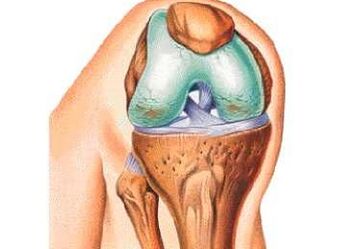
Congenital deformation.Knee sclerosis changes are complex and extroversion or deformation is often found without proper correction.This is because of the fact that one of the knees has fallen more than the load.
Shorten any lower limbs.In addition to deformation, in the pathogenesis of disease development, the weight distribution of the knee is improper.
Super hairy knees.In this state, subsequent degeneration and degeneration into joints, wear of the cartilage tissue of the knee joint may occur.Trebles often lead to spontaneous dislocations and sprains in joint capsules.
Manual dysplasia.The pathological growth of connective tissue occurs due to improper development of the motor surface in the knee joint.
Calcification of joints.The pathogenesis is based on the deposition of salt deposited into the joint cavity and the formation of specific precipitates, which lead to calcification and subsequent osteoarthritis.
osteomyelitis.Inflammatory bacterial diseases that cause bone and joint destruction.First, sclerosis does not form until sclerosis occurs.
Arthritis of any cause.The most dangerous is rheumatoid arthritis, accompanied by autoimmune lesions of the heart and joints.
Diabetes, such as metabolic diseases, can cause nutrients to flow into joints and germination.
obesity.There are large knees on the knees when walking and standing.Due to constant pressure, blood flow to the knee joint is reduced and malnutrition develops.
symptom
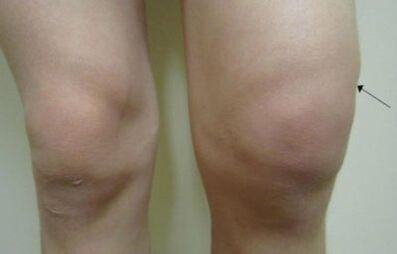
The symptoms of the knee joint depend on the stage of the pathological process.Based on this, analyzing the symptoms and rhythm of its growth, you can evaluate the scale of changes in cartilage tissue.
Knee symptoms:
- The existence of pathological sounds during exercise;
- soreness after loading or after resting;
- Reduce function;
- Edema and joint elevation;
- pathological dislocation, rupture and subluxation;
- Temporary clogging may occur when the joint is flexed and extended.
Clicks and crunches are not noticed immediately and if they notice, they should not pay attention.Pathological sounds encounter the idea that pathological processes occur in the cartilage space with salt deposition or bone plant formation.
Pain occurs due to calcification or the formation of bone plants.At first, pain syndrome is not expressed, and later appears in the morning and passes after lunch, and as the disease progresses, the pain may occur at rest.
The decrease in joint function is manifested in the decrease in stiffness and amplitude of the movement.Depending on the stage, the limitations of movement can last for a certain period of time and be passed on during rest.
Edema is caused by inflammation and secretion of synovial fluid.There are some options when joints become inflamed.This symptom may be scarlet fever or rheumatism.
Because this process applies to the bones and ligaments of the knee, dislocation and subluxation occur.
Interlude is a condition where motion in any axis is completely limited.This symptom indicates neglect of the process and the need for complex treatment.
Articulation degree
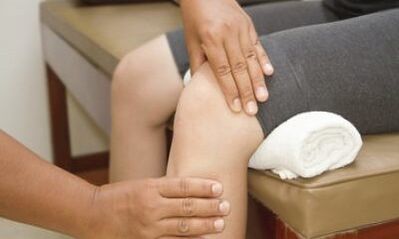
Osteoarthritis is classified according to the following signs:
- Radiological symptoms;
- Clinical manifestations;
- Laboratory data.
The most common and convenient classification is radiology, which can be simple and understandable even for people without medical education.
Based on X-rays, four arthritis in the knee joint are distinguished:
- The reduction in joint space is small and there is no bone genus.
- The gaps were not squeezed, but there were signs of small calcium or bone plants.
- The gaps have narrow expression, bone-like plants, and joint deformation begins.
- Lack of joint space, bone deformation, ankylosing and malnutrition.
Regarding clinical conditions, distinguish the following stages:
- Mild symptoms are insignificant and occur in the morning and pass through 30-60 minutes after waking up.
- The average degree is a distinct symptom, with discomfort before lunch passing through, swelling is insignificant, and it develops rapidly without treatment.
- Severe degree - with persistent pain, static discomfort, stiffness in the morning, and not develop until dinner, kneecap, burger and knee sinusitis.
Laboratory tests were considered to evaluate indicators for soybean and leukocytes.The presence of rheumatoid factors must also be checked.
Diagnostic method
Diagnosis of knee joint articular joints is not complicated, but requires certain skills from a doctor.
Two types of diagnostic measures are distinguished:
- Laboratory diagnosis;
- Instrumental Diagnosis.
For proper diagnosis, each method should be considered and the picture should be analyzed as a whole.
laboratory
If arthritis is suspected, the doctor will specify the following tests:
- General blood and urine tests;
- Biochemical blood test;
- Antibodies that determine rheumatoid factors;
- Determine antibodies of its own cells.
Laboratory data did not perform information on the stage of disease development.
Musical instruments
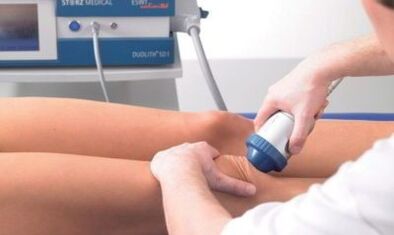
Instrumental diagnosis of arthritis includes the following methods:
- There are two standard predictions for radiography;
- Minimally invasive arthroscopy;
- UZD exam;
- CT;
- MRI;
- Flashing diagram (according to indications).
Radiation diagnosis is designed to determine joint changes and evaluate cartilage status.
treat
The treatment of knee joints is a long process.The duration of treatment is due to the very slow compensation of cartilage tissue, and in some cases it is completely impossible to restore the joint.
Modern approaches to treating knee joints include comprehensive measures designed to eliminate inflammation, normalize lifestyles and improve metabolism of cartilage tissue.
There is such a treatment method:
- Drug treatment;
- exercise therapy and massage;
- Folk medicine;
- Surgical intervention measures.
Doctors specify treatment based on the duration of the disease, its developmental stage and clinical manifestations.
drug
Medication treatments are designed to relieve pain and inflammatory responses.To this end, the following drugs are specified:
- nonsteroid anti-inflammatory;
- Cartilage protectant;
- glucocorticoids;
- Cell inhibition.
Tablets for knee arthritis have many side effects, and it is necessary to monitor the status of the gastrointestinal tract and kidney during treatment.
Usually, joint medications are prescribed for a long time, so the least toxic medication should be chosen.
practise
Joint treatments using exercise therapy are designed to strengthen the muscles and ligaments of the knee.After the dose load in the cartilage of the diseased joint, metabolism improves and the regeneration process is accelerated.
The stages of the patient's disease and physical ability should be considered, and exercise should be selected separately.
massage
Massage your knee joints can improve blood flow and relieve discomfort.Proper massage can prevent elasticity and false joints from appearing.
folk
Treatment of knee joints at home should not be the main method to combat pathology, or it can only be used as a supplement to drugs.
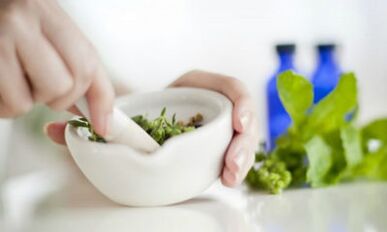
House treatment includes:
- Lose weight;
- Normalization of labor hygiene and compliance with today's regime;
- Fight against inflammation.
This herb has anti-inflammatory effects:
- tin agent from thyme and St. John's wort;
- Calf leaf leaves;
- cabbage leaves;
- Infusion and decay of dandelions and chamomile.
Operation
The procedure is prescribed in accordance with conservative treatment or ineffectiveness required by the patient.One of the main signs of surgical intervention is the fourth stage of radiological characteristics.
During the procedure, the surgeon can completely replace the joint with an internal path disease or change parts of it.


























